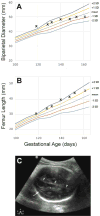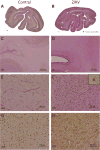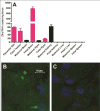Fetal brain lesions after subcutaneous inoculation of Zika virus in a pregnant nonhuman primate
- PMID: 27618651
- PMCID: PMC5365281
- DOI: 10.1038/nm.4193
Fetal brain lesions after subcutaneous inoculation of Zika virus in a pregnant nonhuman primate
Abstract
We describe the development of fetal brain lesions after Zika virus (ZIKV) inoculation in a pregnant pigtail macaque. Periventricular lesions developed within 10 d and evolved asymmetrically in the occipital-parietal lobes. Fetal autopsy revealed ZIKV in the brain and significant cerebral white matter hypoplasia, periventricular white matter gliosis, and axonal and ependymal injury. Our observation of ZIKV-associated fetal brain lesions in a nonhuman primate provides a model for therapeutic evaluation.
Figures




References
-
- Gulland A. Zika virus is a global public health emergency, declares WHO. BMJ. 2016;352:i657. - PubMed
-
- Petersen LR, Jamieson DJ, Powers AM, Honein MA. Zika Virus. N Engl J Med. 2016;374:1552–1563. - PubMed
-
- Rasmussen SA, Jamieson DJ, Honein MA, Petersen LR. Zika Virus and Birth Defects - Reviewing the Evidence for Causality. N Engl J Med. 2016 - PubMed
Publication types
MeSH terms
Substances
Grants and funding
LinkOut - more resources
Full Text Sources
Other Literature Sources
Medical
Molecular Biology Databases

